Adjunct
Services
©
2024, Vern Barnet, Kansas City
MUSIC
Music-live
Musicians,
Advice for
Music-recorded
Sound
System/Amplification
PHOTOGRAPHY
Photography
Photographer,
Advice for
Videography
WEDDING
PLANNER-COORDINATOR
Wedding Planner
Wedding
Planner, Advice for
LIMO Limo
¤¤¤¤¤¤¤¤¤¤¤¤¤¤¤¤¤¤¤¤¤¤
Music
--
live
and recorded
For many
reasons,
many couples prefer
live
music.
For many family-focused weddings or other intimate
ceremonies, either no music or live music
might be more in
keeping with the atmosphere, since recorded music tends to create a
sense
of artificiality instead of the immediacy appropriate for such
meaningful
occasions. (Recordings, from a technical and artistic perspective, can
be problematic.) A friend of mine says recorded music at a wedding is
like paper plates and paper cups and plastic folks at a dinner
at
a mansion.
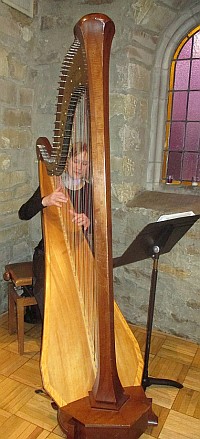 A guitar, harp, flute, a string quartet or other solo instrument or
small
ensemble will make a joyful sound in Pilgrim Chapel. Live music can add
drama and dignity -- and even fun -- in a way recorded music cannot.
A guitar, harp, flute, a string quartet or other solo instrument or
small
ensemble will make a joyful sound in Pilgrim Chapel. Live music can add
drama and dignity -- and even fun -- in a way recorded music cannot.
There may be reasons for
recorded music; it is less expensive or a particular song or recording
may be special to the couple. To use recorded music at Pilgrim Chapel,
please see the note below.
As at a family meal or
friendship dinner, music is not required. Similarly, a wedding with
those
close to the couple does not need music at all. With skillful words of
your clergyman to the guests just before the wedding begins, a bride
entering
either in silence or applause can be far more distinctive and fitting
than mere
recorded music.
But live music can add a special
sense of occasion.
Here are some of the musicians
I've worked with happily who understand how weddings flow best, and
some who are highly recommended to support the flow of your ceremony --
Harp
Tabitha Reist Steiner, tabithanan@yahoo.com, is
one of Kansas City's many wonderful harpists. She is shown above.
Flute and Harp Duo
FLUTE -- Judy Johnson, Drjflute@prodigy.net.
HARP -- Wesley Kelly, kcharpist1@gmail.com.
===============================
guitar
Flute and Guitar
(either
or both)
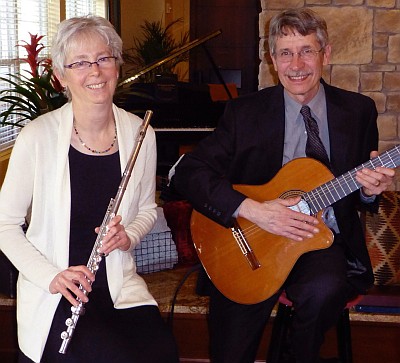
Kathy Riegelman and Larry Beekman, shown above.
website: www.larrybeekman.com/
---------------------------
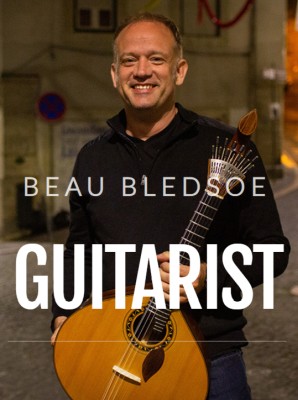
Beau is a world-famous guitarist who lives in Kansas
City. Visit is website with his bio and extensive resume:
http://beaubledsoe.com/
---------------------------
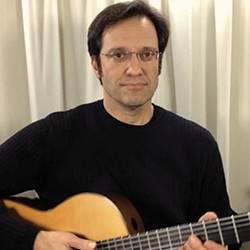
Jim Lammers is an adjunct guitar
instructor at the University of Missouri - Kansas City Conservatory
where you will find his bio:
https://conservatory.umkc.edu/profiles/faculty-directory/jim-lammers.html
---------------------------
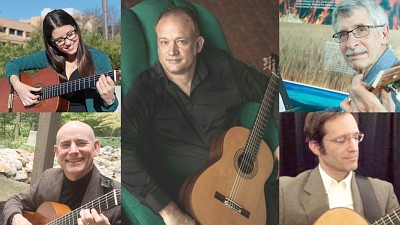
Here is a story on KCUR public radio featuring
these three above with two more guitarists:
https://www.kcur.org/classical-kc-spotlight/2024-04-01/here-are-five-kansas-city-guitarists-to-help-you-celebrate-international-guitar-month
---------------------------
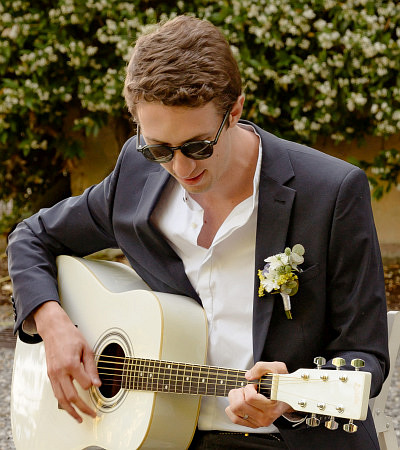
Luke Guillory Welsh -- multi-instrumentalist (guitar,
piano, accordion, and drums), former music teacher
and tutor. Genres include classical, folk, contemporary, religious. LukeWelsh00@gmail.com
---------------------------
ALSO
Justin Larkin, one-man band: Rock 'n' Roll,
Roots& Soul justine_larkin@live.com, @justinlarkinmusic,
facebook.com/justinlarkingmusic.
===============
Violin
Kansas City offers many wonderful
string players who understand how weddings work, including violinist
Stephen
Gedert, stephen.gedert@gmail.com .
Keyboard
Pilgrim Chapel can accomodate an electronic keyboard. Mark
Allen
mallen92music@gmail.com,
908- 566-2503 is an experienced
wedding
pianist
with the equipment that works well in the Chapel.
Ensembles
A versitile ensamble is
the Kansas Crescendo
Trio
(violin, viola, and cello) 816-536-4726, and other options —
flute, oboe, clarinet, bassoon, bass, French horn, harp, trumpet, and
other
instruments. Kansas City Strings offers solo and ensemble options, with an on-line list of classical and modern/pop selections in their repertoire.
Any Instrument
Accordian
to Zither, there
is no limit to what instruments might be appropriate for a wedding --
except your taste and preference. A cherished friend who is a
lesser-skilled amateur instrumentalist may be a more meaningful
performer for you than mere recorded music.
¤¤¤¤¤¤¤¤¤¤¤¤¤¤¤¤¤¤¤¤¤¤
#recorded
Recorded
music¶
While I do not
usually
recommend recorded music, Pilgrim Chapel has a Bluetooth speaker. If
recorded music is what you want, please check with
the Pilgrim Chapel staff to prepare by sharing your playlist,
preferably Spotify, via text to the Chapel phone, 816.753.6719, for
queuing.
If such staff help is
not convenient because of other duties when the music needs to be
queued,
you may want to designate someone to be the “sound
engineer”
to manage the equipment and the times in the ceremony when the music is
expected.
The folks at the Chapel are eager to
support your music plans.
Photography
Rebecca Knechtel 913.299.7972
www.catchlight-photography.com/
hello@CatchLight-Photography.com
Many other fine photographers may be available.
Photographers may find this
helpful.
Videography
Josh Munyan 913.850.8139
cloudcityvideo.com
josh@cloudcityvideo.com
Here
is a 3-minute video
of a
young couple's wedding at Pilgrim Chapel.
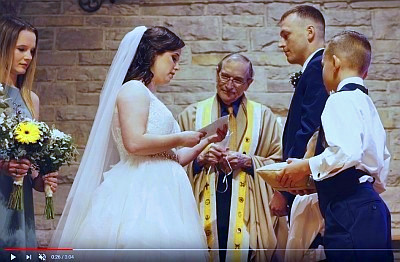
Limo
Mike Algusin -- (913) 713-8096
ELEGANT LIMOUSINE SERVICE
ELSLimos@gmail.com
#coordination
Coordination
-- Wedding Planners
Do-it-yourself
planners may
find this NYTimes article helpful: wedding
planning apps
While weddings at Pilgrim Chapel do not require
a wedding coordinator, some couples prefer to retain
help to manage
flowers,
photographers, musicians,
the reception, and other arrangements. Here
are two experienced coordinators I've worked with recently
with great sense
of people, understanding how to achieve what the couple desires, and
adaptability:
Kim Garnier
www.thirtyonethirtyevents.com
3269 Gillham Rd. Ste
4
Kansas City, MO
64109
913-832-2692
hello@thirtyonethirtyevents.com
Libby Maughan
Co-Owner/ Lead
Wedding Coordinator
Belle and Bows
Weddings and Events
816.916.3741
Some wedding planners -- at
least
when it comes to the wedding ceremony itself, from Processional to
Recessional --
are questionable and can easily throw off what you want. I am
amazed
by the number of planners I have worked with who fail even to think of
faux flowers for the bride to carry during the rehearsal, a
choreographic
detail especially important if a photographer is engaged for the
wedding itself.
(I know nothing about
hiring a trolley for the wedding
party or arranging for the bride's hair and such; but concerning the
ceremony, you would be shocked.)
If
you engage a wedding
planner or co-ordinator,
insist that he or she consult with me so that
we are
"on the same page." Some brides have complained
to me that they
feel like they have to ask permission from the planner for what the
brides want. Don't let your planner's preconceived idea
of
how you should have your own wedding overrule how you want your wedding
to be.
Working with Wedding
Planners
here.
#photogs
FOR PHOTOGRAPHERS:
Every wedding is
different,
and some of this may not apply to the wedding you are photographing.
Still,
some of the considerations may be useful to you.
0. I appreciate the care photographers take
in creating images by which a couple may remember and celebrate their
wedding.
Though Pilgrim Chapel's size has its challenges for photography, it is
an extraordinary facility that lends itself to beautiful pictures.
If you have not been to the Chapel, these outside and inside photos and chart may help
you prepare.
Using flash sparingly does not bother
me, but please use no flash up
close
when someone other than me is reading.
You are welcome anywhere in the Chapel
except the chancel
(platform) area during the ceremony. Thank you!
1. I work with each couple to plan a wedding that
best suits their wishes. This
link outlines a sequence many couples
find useful as the basic structure for their ceremonies. Check
with
me about variations.
2.
I usually arrive 30 minutes before the ceremony (15 minutes for a brief
rental). Unless the paperwork has been executed earlier at a rehearsal,
as soon as possible, I prepare the
license and
certificate
which
the couple will have placed on the altar-table. Then I find
the
two
witnesses
and invite them to sign in the side room. You may want a photo of that,
or reenact the signing at some point. Doing the "paper-work" before the
wedding gives the couple a chance to enjoy their guests right after the
ceremony or be available for photos without an interruption
for
the witnesses signing the documents.
Before the ceremony begins, candles, rings, and
the
scrolls for the vows (if desired) are usually on the
altar-table.
Usually material for any special rite, such as a wine ceremony, will
also be on the table.
3. Except for a
brief ceremony with few guests,
usually after I am vested, just before the ceremony is to begin,
I greet
the guests informally from the nave (main
floor) with a few instructions,
such
as "Let's follow the traditional practice of standing when
the bride appears."
Sometimes a couple will ask me to ask
their guests to refrain from
using
their smart phones or cameras to take pictures in order to minimize
distractions.
Often I conclude the informal greeting
by lighting candles on the
altar-table.
4. You will want to know among the various entrance,
processional, and arrival styles, which
will be used,
coordinated with
musicians or sound engineer.
Often the bride is escorted by her
father
or other relative or friend. In the case of the father, I suggest he
kiss
his daughter on the check and place her hand in her groom's hand. The
couple
face each other. If she has carried flowers down the aisle, she retains
the flowers for the next few moments so you can get a photo.
An attendant
may fluff or rearrange the bride's dress.
5. When the dad sits down, I formally welcome everyone
to the happy occasion. Then I motion for an
attendant to take the flowers
from
the bride for most of the rest of the ceremony. At least that is the
plan!
6. You may want to photograph any readers or other
participants as the ceremony proceeds. You may want to check with me
about how the
presentations, if any, will be made, how vows (often from scrolls)
and rings will be exchanged; and if
the couple has selected special rites such as a "unity candle" or
"hand-fasting,"
how that can be best photographed. I routinely discourage music except
before and after the ceremony proper.
If the couple exchange vows from scrolls, you may
want to
position yourself close to the nave to get a close-up of the scrolls.
7. After I pronounce the couple married, an embrace
is customary. Then I turn the couple to face their guests and motion
for
the bride's attendant to return the flowers to the
bride.
Some photographers
like the officiant to stand aside for a photo of the kiss; I
prefer not to interrupt
the ceremony for that. You can arrange a reenactment later if
such
a picture is desired.
8. The ceremony usually concludes with everyone
standing for the final benediction.
9. Among various options for recessionals and
exits, you will want to know what the couple wants.
Sometimes guests throw rose petals on
the couple as they exit, or plan other flourishes.
10. If the couple wants a photo with me after
the ceremony,
I'll be guided by your advice. If the weather permits, some couples
like outside the front door with the couple on the sidewalk and me
behind them on the
steps.
Whatever you decide, I appreciate your arranging
it as
soon after the ceremony as possible so I can attend to my post-ceremony
duties.
And I like to get a picture of the
couple with my camera. I'll try not to get in your way.
11. Let me know if you have questions.
12. Thank you for making wedding images to
cherish.
The
Reverend
Vern Barnet, DMn
11.
MASKS.--
Inside the building I will be masked. I do
not
require you to be masked, but it is a reassurance to others who may be
masked about safe practices during the ceremony. (Ceiling fans
and a floor
fan in the chancel insure good ventilation.)
If
the weather is prohibitive, I
can remove my mask for a moment after the guests have departed. (This
is subject to change depending on community health measures.)
#musicians
FOR MUSICIANS:
1. If you have not been inside Pilgrim Chapel yet, here are some photos,
including many interiors, that may be helpful. Musicians usually sit on
the right (south) side between the front pew and the chancel (platform)
area.
2. Bring your own music stand if you need one. Read
this if you think
you might need amplification.
The Chapel is quieter if all the pews are filled (72 guests), but the
stone walls, and wood pews, ceiling, and floor, with carpeting only in
the chancel, make this a wonderful venue for live music.
3. I will greet you soon after I
arrive and outline the ceremony and answer any questions you may have.
4. Except for a very brief ceremony with few guests,
usually after I am vested, just before the ceremony is to begin,
I greet
the guests informally from the floor with a few instructions,
such
as "Let's follow the traditional practice of standing when the bride
appears." If you are playing prelude music when I appear to present informal greetings,
you
can find a phrase to stop or continue playing in the background.
Often I conclude the informal greeting by lighting candles on the
altar-table.
5. You'll want to be clear about prelude and
processional
music and cues for when to begin. 6. Here is a
possible basic sequence
for the ceremony. I'll let you know of any variations that woud affect
your performance. Most ceremonies (from the Welcome to the Benediction)
run between 12 to 20 minutes.
7. I discourage music during the ceremony, even
"background" music. You and I will honor the couple's considered
wishes,
however.
8. Usually the ceremony ends after the couple embrace,
I turn them toward their guests, I ask the guests to stand, and I offer
a concluding benediction. My last word is "Amen" or maybe "Go party!" Then you begin
music
for the recessional or departures.
I embrace live music at weddings. The gift of
your music will make it a genuine occasion. Thank you.
#Amplification
Amplification
equipment
Musicians needing
amplification
for weddings I have performed at Pilgrim Chapel have brought their own
equipment as I don't think the Chapel has any. Most
instruments,
including acoustic guitar, don't need amplification because the
acoustics
in the Chapel are so good, but of course electric guitars do need amps.
(Live music is so much better than recorded music because it makes a
ceremony
somehow more immediate.)
When couples have had
ceremonies video-recorded, I've sometimes been asked to wear a mike for
the recording to pick up the bride and groom (as well as me), but not
for
amplification in the Chapel which is usually not necessary.
Pilgrim Chapel was built
for the Lutheran Congregation of the Deaf, and it is a wonderful irony
that the Chapel acoustics are so perfect.
I've performed well over a hundred
weddings at Pilgrim Chapel, and a microphone has never been used for
the ceremony (except for video-recording, which was not heard over any
loudspeaker). I advise keeping things as simple as possible.
I hate microphones. (Yes, I was
provided one when I was in India and spoke to 500,000 on the
banks of the Ganges River, but Pilgrim Chapel is indoors, and a bit
smaller venue.) A microphone-loud speaker system is not necessary. It
gets in the way. The acoustics in Pilgrim Chapel are splendid. The
Bride and Groom will surely be able to hear each other, which
is what counts.
I suggest vows on paper,
rolled up like scrolls, to dramatize the vows for those in the
back pew who can see what you are doing even if they miss a
hearing word or two.
If
you really want a sound system (you may need to rent it), of
course I will cooperate because the wedding should be what you want,
but you have my opinion about it as an unnecessary and troublesome
complication.
#BasicSequence
A Possible
Basic Wedding Sequence
Witnesses sign the marriage documents
(unless this was
done at a rehearsal)
Minister greets guests informally
Lighting of candles
Prelude and
Seating of parents and special guests
------
Processional, often with music
Welcome by the minister
Consent and Presentations
Prayer if desired
Reading(s) if desired
Exchanging Vows
Exchanging rings
[Any special rite such as Unity Candle]
Pronouncement and embrace
Benediction [all standing]
Recessional
|

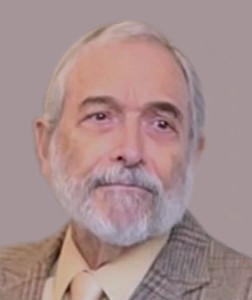
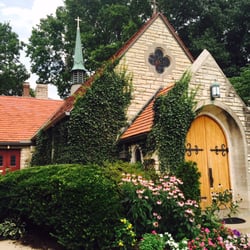
 A guitar, harp, flute, a string quartet or other solo instrument or
small
ensemble will make a joyful sound in Pilgrim Chapel. Live music can add
drama and dignity -- and even fun -- in a way recorded music cannot.
A guitar, harp, flute, a string quartet or other solo instrument or
small
ensemble will make a joyful sound in Pilgrim Chapel. Live music can add
drama and dignity -- and even fun -- in a way recorded music cannot.






